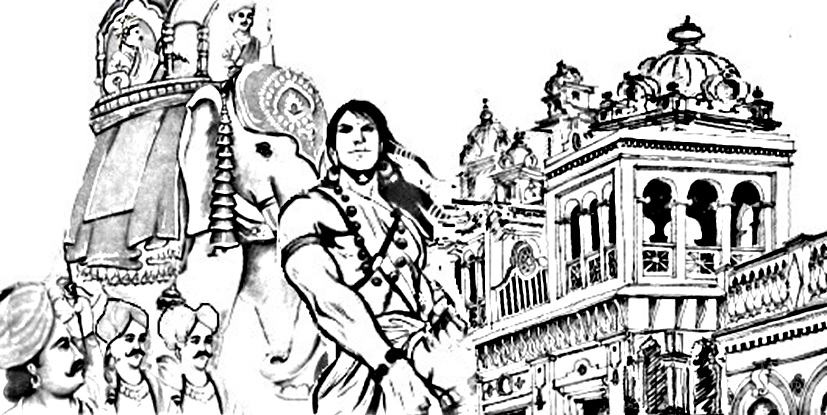

Though several centuries have passed, yet some of the epics in Sanskrit and Tamil are even today cherished by many and which pass through generations either by word-of-mouth stories or in print form. Those include famous five epics in Tamil namely ‘Silapathigaram’, ‘Manimegalai’, ‘Kundalakesi’ ‘Valayapathi’ and ‘Seevaga Chinthamani’. They are called Maha Kavyas (meaning Great epic) similar to Kalidasa’s ‘Kumara Sambava’, ‘Raguvamsa’ in Sanskrit, ’Keeradarjuneeyam’ by Bharavi, ‘Sisupalavatham’ by Magar and ‘Naishadha Charita by Sri Harsha, all composed either in Devanagari language or in Sanskrit .
Raghuvamsa traces the antecedents and descendants of Lord Rama – and encapsulated the principal events in the life of each one of the main players of the dynasty. Raghuvamsa unfolds the dynasty to which Lord Rama belonged to and whose lineage originally emanated from the Solar Dynasty in which Ishvaku was the first-born King to establish Ishvaku lineage in earth. It was from the period of Raghu, one of the key Kings in Ikshavaku lineage, that the Ikshavaku dynasty came to be called as Raghu Dynasty or Raghu’s lineage. It becomes clear from Raghuvamsa, that Maharishis like Vashishta and Kaushika were alive even before Rama was born on earth.
The greatest poet and dramatist who wrote Raghuvamsa, widely known in the northern parts of India during the rule of King Vikramaditya was Kalidasa whose life and history is also mired in mystery and is sketchy. Historians suggest that Kalidasa may have lived in the sixth century B.C. Legend has it that Kalidasa, grown up without even formal education, attained extraordinary proficiency in Sanskrit and got unparalleled knowledge to freely compose epics by the grace of Goddess Kali. All the compilations of Kalidasa excelled the works of other masters in the field of literature in Sanskrit. Every one of his compilations were masters of their own sort. More than this nothing is known about the life of Kalidasa. It is intriguing that even scholars have no answers to what prompted Kalidasa to compose Raghuvamsa and the probable period when he composed it. It is widely believed that in the original contents of Raghuvamsa which has been written in the tenth century by Kalidasa, consisted of 25 Cantos out of which lesser than 19 Cantos were only available and the rest remain untraceable till date.
Also, Raghuvamsa ends abruptly at one point, without stretching to the successors who continued to be the rulers of the Raghu lineage. Therefore, details on the antecedents or decedents of Raghu lineage, if any, written in the missing six Cantos, remains mystery. It is very interesting to note that except Raghuvamsa, no other literary work, in any language, composed prior to Raghuvamsa, has the history of Lord Rama’s clan. It is therefore baffling to read as to how Kalidasa was able to compile the lineages of Raghu of Ishvaku dynasty in such great detail? It could only be a divine gift from Lord Rama bestowed to Kalidasa.
Another important aspect which add credit to the literary work of Raghuvamsa was that though Kalidasa composed Raghuvamsa in the 10th century, it has been translated into Tamil language for the first time in the 15th or 16th century, by a Lankan Tamil King named Arasakesi, along with another emperor named Pararajasekara Singariya of Jaffna in Sri Lanka. Pararajasekara Singariya ably supported Shri Arasakesi in all aspects of translation. Also, it is stated that the said work of Arasakesi in Tamil was first released in the Royal courtyard of Raghunatha Nayak, Emperor of the then state of Tanjore in Tamilnadu in India. This therefore strengthens the belief that both India and Lanka may have thrived together at one point of time in the history. Also the very fact that several texts- literary, spiritual and poetry – found compiled in Tamil found in several parts of Lanka suggest that both Tamilnadu and the southern parts in Lanka may have been ruled together by several Kings belonging to Tamil race and therefore the first translation of Kalidasa’s Raghuvamsa in Tamil by a King in Lanka has not surprised the scholars.
The unknown and hidden message in Raghuvamsa has been, when the Universe was created by the Supreme Parabrahman, it was doomed that Lord Maha Vishnu, one of the Trinities will incarnate in ten forms on earth to destroy the evil forces at different periods of time. Out of the ten forms, Lord Vishnu will incarnate as Lord Parasurama, Brahmin by birth in his 6th form to destroy the Kshatriyas in revenge, in seventh incarnate, he will be Lord Rama to destroy Ravan, a Brahmin by birth, and later to incarnate as Lord Gautama Buddha to uplift the downtrodden. Though Parabrahman initially created four Varnas (division) in the name of castes namely Brahmin, Kshatriya, Vaishya and Sudra, in order to establish that none of the divisions are either inferior or superior to others and all are equal before Parabrahman, the Supreme, the drama with ten incarnations have been staged by Lord Vishnu by incarnating in different castes of the society in which each ones’ supremacy in different periods of time has been displayed. Kalidasa’s work reveal part of this fact as Vishnu incarnated as Rama, Ravana and Parasurama and displayed their supremacy.
The above aspects besides, Raghuvamsa reveals how Lord Vishnu had passed through several interwoven sequences before incarnating as Lord Rama and what length of period he had to stay and stray in each of the events. What Kalidasa produced was not just a mere document, but much beyond. One has to accept that Kalidasa must have been divine blessed and therefore was able to absorb the life story of Lord Rama, lest the divine aspects and the lineage of Lord Rama would have remained unknown to the society. Though Raghuvamsa bares the lineage of Lord Rama, unless one deeply read the web of sequences which included the birth of Ikshavaku dynasty and the emergence of Raghu’s lineage and subsequent developments the epic cannot be fully cherished.
As per the mythological story in Vishnu Purana, Lord Brahma created King Daksha out of his thumb. Sun God was son of Daksha and Aditi Daksha’s wife and mother of Sun God. From Sun was born King Manu who initially established Sun race or Suryavamsa (Solar dynasty). Few of the important personalities belonged to Suryavamsa included Bhagirath who brought Ganges to earth, Saintly sage Vashishta, King Hari Chandra who always held promise to be sacrosanct, Emperor Sibi in an act of compassion placed his chariot by the side of Jasmine plant to enable the creep grow and great King Sagara.
In Thretha Yuga, Ikshavaku, grandson of Sun God was enthroned as Emperor of Ayodhya in earth which lay on the banks of river Sarayu with Koshala as the capital city. The successive Kings who belonged to Ikshavaku family and ascended the throne were called as Ikshavaku dynasty rulers. Though Ikshavaku dynasty originated from the Solar race, since Ikshavaku was sent to earth to rule, his lineage was called Ikshavaku dynasty instead of Solar dynasty. Scholars opine that prior to Lord Rama, over 118 Kings ruled the Kingdom under Ikshavaku dynasty , Lord Rama being the 58th amongst them. After King Raghu, great grandson of King Dilipan ascended the throne in the Ikshavaku dynasty, the title Ikshavaku dynasty disappeared and came to be called as Raghu vamsa i.e. Raghu’s race.
Birth of Raghuvamsam- King Dilipan: First in line
Once upon a time, Vaivachutha, son of Aditya, who belonged to Manu race ruled the universe. His Kingdom was originally called as Ikshavaku Dynasty. Even though several Kings belonging to Ikshavaku dynasty ascended and descended the throne and ruled over the land only for short periods of time, the one important King amongst them was Dilipan. Kalidasa in his 30th verse, described the ascendancy of Dilipan as ‘the King who ascended the throne in Ikshavaku dynasty like full moon which appeared in the ocean of milk’.
Dilipan must have been special creation of divine as he was a unique personality who maintained high moral characters; his consort was Suthakkinai; the couple had no children. Dilipan was pious and benevolent; fathomless in mind and manners; patient and generous; loved and honoured by his folks; had deep and comprehensive understanding of the scriptures and fully respected the contents in them; very compassionate; he respected even his enemies if they possessed good characters; was a great warrior. The very name of him caused fear in the minds of his enemies. Maharishi Vasishta was the mentor, priest, preceptor and teacher (guru) of the Ikshvaku clan.
While in throne he surpassed the fame of all other kings who existed around the universe; unfortunately, Dilipan had no child to succeed him in the lineage of Ikshavaku and therefore along with his wife he met their Raja guru Vashishta seeking his counsel. After Dilipan and Suthakkinai bowed before their master, Dilipan expressed their agony thus ‘Great Maharishi, our mentor, you are a beacon to us and guided us whenever and wherever we needed. Only your blessings gave prosperity to us and sans your blessings, we would have been mere dust. There was no dearth of rain or sunshine in our lands and in each of their seasons they were generous; there is no drought or shortage of food grains. My subjects have neither fear nor pain from evils or their enemies. The credits for all these goes to your continued guidance which keeps us rule over the land freed of tension. Yet oh, learned mentor, what agonises us is that none is born to us so fat to succeed me. Are we not benevolent, are we not engaged in charity and filled the starved stomach of our subjects? Oh master, we will incur the wrath of Pithru dosha as none will succeed me to perform ritualistic offering of food {Pind Daan (पिंड दान)} to our deceased as we are childless. This will block our path to go to the heavenly abode. We will be shamed by the society as barren couple. Oh, master, what harm have we done to remain childless? Help us find a solution to this vexed issue, lest we will remain responsible to deny pind daan to the deceased in Ishvaku clan. Kindly help us get rid of this problem’.
Sage Vashishta said ‘Dilipan, the cause of your pain is your own. You unwittingly committed a sin in the past which attracted curse from Divine Cow Kamadhenu. Once in the past, while returning from heaven, even as you saw divine Cow Kamadhenu resting under Kalpatharu tree, you not only failed to pay respect to the Divine Cow Kamadhenu, but also ignored her and hurriedly passed by her side to meet your wife who was to conceive then. Enraged by the act of your indifference and feeling insulted, she cursed that you will remain childless till you atone your sin by paying due reverence to her . Her curse is the cause of your present state of affairs and the womb in your spouse remains dry till now’ thus concluded the sage.
Dilipan gets the boon
Agonized Dilipan regretted the past unintentional act and sought the intervention of the Maharishi to suggest how to atone the sin to beget a son, lest the lineage in his clan (generation) will come to an end. Sage Vashishta advised ‘Dilipan, instead of repenting the past act, pacify the divine Cow Kamadhenu by taking care of her offspring Nandini as Kamadhenu has gone to the underworld (Abyss) to attend a fire sacrifice being performed by Varuna and the infant Nandini is left alone and helpless in heaven. Utilize this opportunity to appease divine Kamadhenu by tending her offspring Nandini . Reach heaven fast, attend to all her daily chores and remain her protector till her mother returns. Be by the side of Nandini as she goes to gaze in the dense forest , walk with her wherever she goes till she fall tired and retires. While staying there, lead an ascetic life, eat what you get in the forest, sleep on the mattress made of Kusha grass (Darbha Grass) and offer prayers to Nandini until her mother Cow returns and propitiated. Receive Kamadhenu with due reverence as and when she returns from the underworld. Be sure Dilipa she will certainly condone your sin and grant boon to quench your thirst for an offspring’.
Soothing counselling well absorbed, Dilipan swiftly left the ashram after falling flat at the feet of Vashishta and profusely thanking him for his counselling and advise. Not a single moment was wasted from then on and the couple took bath, travelled to heaven to tend the cow Nandini. They fed the cow each day with freshest grass brought from the garden and shadowed her as she grazed in the forest lands, brought her back to the ashram in the evening. Dilipan’s wife Suthakkinai cleansed her body, fanned and smoothed to her comfort. Several days passed and the righteous couples revered and attended to her daily chores arduously. While patient Dilipan assiduously tended her in the wood, Suthakkinai pleasantly welcomed her in the evening and put her to sleep in comfort. Nandini perceived the intention behind the service offered by the couple and decided to test their piety and faith- whether they served her from their inner heart or their services were superficial to please her mother Kamadhenu to get boon. Nandini used to daily go to the hermit of sage Vashista release milk from her udder in a vessel kept in the ashram for the consumption of sage Vashishta. It was a routine affair.
As schemed by Nandini, on a fateful day when the King had followed the holy cow in the green slopes of the forest, while Nandini was grazing on lush green belt, Dilipan gazed on the beauties of the forest standing a distance by relaxing his attention on Nandini even as she entered a cave. Suddenly when he redrew his attention over the cow, he saw her inside the cave and under the paw of a fierce lion. Nandini remained fallen on the ground.
Shocked at the sight, he rushed near the cave and tried to fire an arrow to shoot the lion; alas not only his fingers became numb but also he could not bring his hands down. Dilipan went crazy as the animal spoke in human voice. The Lion said casually ‘Oh, King, know me as Kumbodara, friend of Nikumbha who is serving in the altar of Lord Shiva. I was sent here by none other than the Lord himself to stand guard to this tree ‘Devatharu’, which is pet tree to Goddess Parvathi who likens it as her own son. One day a wild forest elephant rubbed her body severely over the trunk of this tree which tore off the barks. Badly and fiercely bruised, the tree experiencing intense pain raised deep mournful sound. Hearing the groan of Devatharu, mother Parvathi rushed to the site only to see the plight of the tree and soothed her. Thereafter she rushed to her lord and complained about the incident, seeking protection to the tree from future attacks. Therefore, my Lord deputed me to remain here in the form of a Lion to scare away the preying animals who intend to hurt this tree in some manner. On command of my lord, I am on guard here protecting the tree throughout the day and night. No animal ramble here and I have to satiate my hunger preying and eating only those which rarely venture here. Pity me Oh, King, it will be a wild guess how long the present status of my half hunger would continue, and me remain on grass and fruits to satiate my hunger. I am slowly losing my strength, oh King, cease interference in my sovereign sway and do not block my precious feast which I have earned hard after waiting for several days. If you desire to loosen your numb shafts to regain strength, then desist from the futile act and go away from here.
Dilipan took no comfort from the words of the Lion and pleaded ‘Listen, oh, King of the Jungle, know the power of my master (meaning guru) I revere, whose curse can even destroy the universe. You cannot slaughter the cow, which is his treasure. Do not insert spokes in his daily chain of chores by making the cow your feast. Leave away the cow and instead have me as your food to satiate your hunger’.
Kumbodara smiled through its flashing teeth and said ‘Oh, King my pity to your madness. If this is lost, your fiery guru can be appeased giving some more cows. See the other side, if you give away your precious body, protection to those dependent on you will be lost. What guarantee will be there that upon your demise your folks will get adequate shelter? Therefore, to save your dwelling on earth, oh, King, think twice before you act and quickly empty this space’.
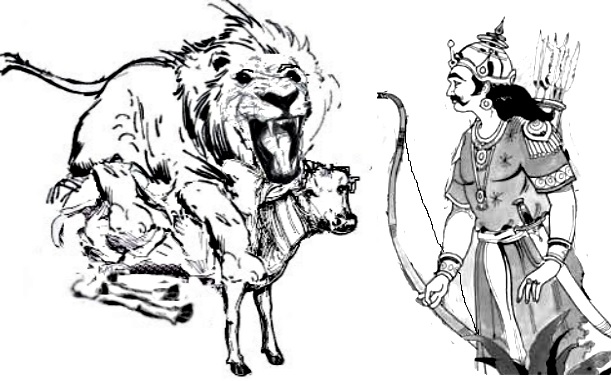
Unmoved by the sweet words of the lion, Dilipan reacted ‘Oh, lord of woods, desist from flattering me. Remember the aphorism ‘whoever betrays his master’s trust, they commit blasphemy’. Clear my doubt first, would you betray the trust of Lord Siva who has reposed his faith on you and entrusted the act of protecting this tree from getting destroyed by wild animals? Even gifting million cows will not soften my guru to whom this cow is his soul. How would I show my face to him when this holy cow is lost and gone? Be merciful, oh, Lion, take me as ransom and leave the cow to safety’. As Dilipan continued to plead with the Lion, the reluctant Lion finally agreed to have him as her feast. Said the Lion ‘King, throw away your weapons and be my feast. I will leave the cow after you surrender to me. Not a moment was lost thereafter. Quickly and unhesitatingly, Dilipan threw away all his weapons and cast himself as prey before the lion. As Dilipan lay prostrated before the Lion as prey, rain of flowers fell on him with a sweet voice calling from the air ‘Get up my son’. Hearing the voice, as Dilipan got up he saw sacred cow Nandini standing before him, Lion missing. Nandini said ‘Oh, King, listen, by my magic art I raised this scene to test your piety and faith. Your piety has pleased me. Do not hesitate, quickly tell me what you need’. Showing nervousness and anxiety and clasping his hands, the King kneeled before Nandini and asked ‘Mother of cow, give me a son of noble race to rule the kingdom following me’. Nandini too was quick to bless him ‘worry not, Dilipan, forthwith take the boon you longed for. Fill the milk flowing from my udder in a leafy cup and both of you- husband and wife- drink and quench your thirst for an offspring’. Next moment Dilipan saw milk oozing out from her udder; he quickly filled the milk in a hurriedly made leafy cup till the flow of milk stopped. After prostrating and paying obedience to holy cow Nandini, the couple returned back to their ashram and narrated all those happened to Maharishi Vashishta and with his consent the couple drank the milk and returned to their Kingdom.
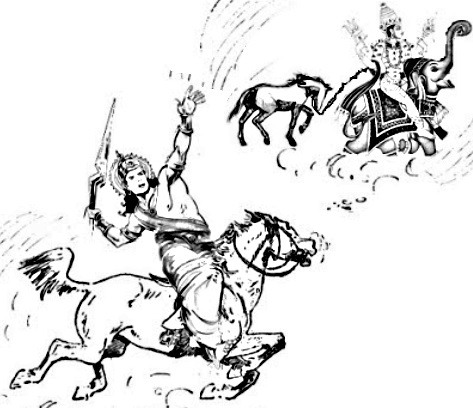
Birth of Raghu and War with Lord Indira
Like slow moving clouds, next few months passed in peace and Suthakkinai conceived, soon to give birth to a pleasing offspring much to the delight of the King. Joy drums raised sounds of music, folks cheered and dancers twinkling feet echoed through the palace halls. Benevolent in mind and heart, Dilipan left no stones upturned in giving rewards to the delight of all hearts in the kingdom. Ceremonial rituals completed, the King baptized the newly born baby as Raghu. Raghu grew noble and generous. Like stream sucking ocean water, learning of all sorts, he acquired skills and fully got trained in entire sacred and kingly lore. When age of wedding neared, like Daksha’s daughters got married to Moon, Raghu too was happily wedded to a noble Princess. Even before Dilipan devolved the Kingdom on his son, the saintly sage Vashishta advised that he perform Ashwametha Yagya (Horse sacrifice) to safeguard the cares of the kingdom.
As Ashwametha Yagya commenced, the safety of the Yagya horse was thrust upon Raghu. When the ceremony commenced, jealous of Dilipan performing the Yagya, which if allowed would take away his fame, Indira, the King of heaven by his mystic power stole the horse though well guarded by Raghu. When the ritual to all the horses which travelled en path in the Ashwametha Yagya were completed, the one last guarded by Raghu was called for the completion of the Yagya, but it was not to be seen since stolen by the heavenly lord. Amazed Raghu realized that he has been mesmerized and cheated by unknown. Hearing the cries of alarm raised by perplexed Raghu, sage Vashishta’s divine cow Nandini rushed down from heaven to lend her help to Raghu, son of Dilipan, who once was her servant guard. Aware of what had happened, she offered her urine to Raghu to wash his face which if done in faith would lift the veil of secrecy on the missing Yagya horse. When Raghu complied in unflinching faith what divine Nandini said, the veil of secrecy unfolded to show before his eyes, the King of heaven Indira driving off the reluctant reed to his palace. Raghu immediately rushed to Indira and challenged him with a loud voice.
Raghu thundered ‘Oh King of heaven, the one who accept the oblations in the sacred rites, how would you impede the Yagya by stealing away the sire (horse), the last one needed for the rite to conclude and the one under my custody? Oh, King of heaven, your act betray the act of a noble guardian. You will be condemned by nature for this treacherous act of stealing a sacrificial sire. O, highest lord of heaven, be considerate to unshackle the sire and allow heaven’s bliss befall on my father, lest you will remain a sinner for ever’
Amazed at the boldness of Raghu, Indira restrained his chariot to reply ‘Oh, noble prince of Kshatriya Kingdom, you speak well, but remember, when one seek to rob the fame of another, in all fairness another whose fame stand in risk (meaning Indira’s fame will lower), will impede the act of his foe at any cost, lest the fame would fade away from him. Your father’s ceremony (meaning performing Ashwametha Yagya) if allowed to conclude will ruin my fame as Lord of lords, and I will be left with nothing and therefore, I have no other alternative but to impede the Yagya’. Devendra continued ‘My son, listen further. Lord Vishnu reign supreme as Purushothama, Lord Siva as Thrayambaka and I hold the title Sadakrutha, lord of hundred sacrificial rites. When each one of us long to keep our fame and title unblemished, unscratched, how would you expect me alone to lose it and give it on a platter to another? I advise you to desist from the vain attempt to win back the sire which I am taking to save my title. Do not tread the path of Sage Sagara’s sons who perished while chasing sage Kapila. Still if you desire to pursue, pull out your stock and engage in war with me’.
Undaunted Raghu complied to the call of war and pulled out his weapons. Both were engaged on fierce battle when earth drank bloods from both as each one inflicted severe wound on the other. Though stunned at the gory sight, Airavatha, Lord of elephants in heaven, and carrier of Lord Indira remained a mute spectator. The terrible arrows flying both ways flew like thunder stinging each other like poisonous snakes. Difficult to predict the winner was the situation when both Raghu and Indira fell on to the ground, fully exhausted.
Severely wounded Raghu proclaimed ‘Mighty lord, move further not. Unless I am vanquished, me valor in Ikshavaku dynasty, will not allow you to place your leg one step further along with my sire. Either the sacred sire be restored back to my pious father and he be allowed the reward of the arduous rites, or my fierce weapons will continue impeding your steps to go with my sire. Oh, lord of lords, walk away with honour releasing a boon on oath that my father beget the reward due by the ceremony and then I will cease the fight and allow you to go away’.
When Raghu remained firm and unyielding to give up, the chief of heaven who lost the luster, realized the futility of the fight and finally yielded to release the sire on oath the boon Raghu craved for as reward to his father. Devendra had nothing else except to comply before departing to heaven. There at King’s Palace, when Raghu reached with the last sire needed for the sacrifice, Dilipan received his heavily wounded son with joy and sobbed uncontrollably in ecstasy and continued the Yagya till he mounted Raghu on throne at the end of the ceremony. As years rolled, aged, Dilipan desired to rest and thus marched to heaven in peace.
Raghu ascended the throne
The folks of Ayodhya in all fairness rejoiced on crowning of Raghu, barring Kings of neighbour states who felt jealous of him. Fairness was Raghu’s rule who neither burnt, nor chilled the selective hearts. Only good he chose, but never allowed wound the hearts of folks. His sway reached far ends in all directions. Cool rays of moon and heat of sun were his natural virtues. After ascending the throne Raghu absorbed all aspects of lore, from dialectics to ethics like the great ocean that sucked each drop of water to swell its body. His wide expanded eyes lit up his face like the moon light and his sight was clear to swell the coffers from not only from those vanquished, but also from either small or big rulers that he bashed. The mighty King safeguarded frontier posts, and as the autumn dried and spring sprang up, Raghu’s chariots raised and elephants trumpeted across four corners on a career of universal conquest. Before undertaking war on others to annex territories Raghu consulted his ministers. They also encouraged the king by saying, ‘Oh king, which land will remain away from the reach of a king who has the might? A Kingdom cannot remain in peace unless the enemies of the Kingdom are eliminated. A King has to go in all directions, fight annex lands and bring wealth. Even the ocean do not feel shy to swallow the water of rivers or rivulets. Therefore, do not hesitate. Undertake tour on all sides, wage war and return victorious’. The mighty army’s march with bearded warriors raised clouds of dust as if earth and air collided uprooting the trees. He led his valiant host (army) like furious Ganges flowing down to earth from the braided hair of lord Siva and as he marched, boundaries only continued to expand, immeasurable in length and breath.
Like the bees that swarm the thickly round honeycombs, kingdoms from Bengal to Kalinga were smoked out. Even those opposed his command beyond Mahindra Mountain were subdued one by one. Wings clipped, the vanquished Kings were set free once they bowed like reeds and poured their wealth under his feet. Raghu’s glory continued to spread even in south when king after kings fell beyond river Kaveri under the swiftly moving steeds of the King, and wherever he marched, mighty pillars of victory were hoisted.
After plunging countries from Persia to Kashmir, the lawful triumphant King returned home and performed Visvajit Yagya and lavishly feasted and gifted the invitees and gathered guest who sought alms. Thus, the wealth he carefully accumulated from several corners of the land with his might began to melt away soon in his acts of philanthropy and coffer dried up as fast as it swelled, ultimately leaving nothing to gift except an earthen pot when Sage Kausch visited him seeking alms.
Sage Kausch seeks alms – Raghu’s generosity
When sage Kausch, the disciple of sage Varathanthu visited Raghu seeking wealth to clear his master’s debt which was nothing but meed that he promised for the lores he got from him, he found Raghu’s coffers were empty. Raghu was left with nothing except an earthen pot as wealth and therefore could not offer anything since what he accumulated arduously had melted in acts of benevolence and alms. Observant of strict self discipline, he warmly welcomed the sage Kausch, offered argya (water) in the earthen pot (the water is given to cleanse the feet and hand of the visitors as courtesy and the practice called offering ‘Argya’) and got him seated comfortably. Fairly guessing the intention of the visit of the sage, without revealing his bankruptcy, but in shyness he addressed the sage thus: ‘Oh, Master sage, my salutations to you. Is your master Sage Varathanthu from whom you got the lore safe and well? Do the trees shade your dwelling? Do calves and lamps run hither, thither in pleasure, unharmed and remain safe?’ The King attempted to divert the main issue to buy time to work out a solution if alms were sought. Hiding gloom in mind, he could offer only courteous words, not the wealth the sage sought.
At the same time dismayed Sage Kausch too sensed helplessness and bankruptcy of the king and spoke thus ‘King of kings, under your rule, wherever I visited, everything appeared fine. As if the Sun wipes out the darkness, your folks are free of distress under your crown. One learns the art of discipline from their elders and steadfast follow them in each step and I find your action too reflecting it so. Your revered rule has outshone the fame of your elders in realm. I am sorry, it is my misfortune that I had to come during your helpless period of time, when you remain stripped off all the accumulated wealth which has been given away in alms. So King, continue to rule well, may your lord shower happiness in abundance’. Blessing the King so, the sage rose up to bade good bye.
The King stood before the Sage blocking the passage of his exit and addressed ‘Pardon me , oh, revered Sage, in the state of helplessness, I failed to inquire reason for your sacred visit and passed time pondering for a solution in case alms is sought. Pardon me revered sage, I am a sinner. Be generous and bare all on your visit’. Embarrassed sage revealed intention of his visit. ‘King listen, I sensed your status when you welcomed me with an earthen pot and therefore it pained me too to bare the facts before I decided to depart. When I began to learn lore from my preceptor, he taught me Vedas, Mimamsa, Purana, Dharma and everything connected and I was anxious to know his meed for the lore he taught me. My preceptor, delighted with my service and dedication, declined my offer. Thereafter when my knowledge attained perfection, before I departed, conscience pricking, I again raised the issue of meed. My preceptor, completely unconcerned of my poverty, shockingly made a demand ‘For the fourteen million lores I gave, you owe me fourteen million coins, one each for one lore’. Alas, sure his meed was beyond mine capacity to pay, but I promised to clear the debt in right earnest and reached you to seek help, but after sensing your plight, my mind refused to lift the veil and I chose to quit the scene. Shy away not, benevolent King, when one benevolent is found parched, the wise always seek the same from another lord. Thus, your dried coffer compelled me to quit the scene to search another lord’. As the sage got up to leave, Raghu extended his plead again ‘Oh, pious sage, I will not allow you to go empty. Be kind enough and stay cool for two days as my guest. I will start forth to obtain, by any means the boundless treasure you need to pay back your debt’.
The whole night the restless King pondered for a solution and ultimately decided to seek the alms from Lord Kuber, if need be even by use of weapons. With clearly etched intention in mind, Raghu stored enough weapons in his chariot to proceed to Kuber’s palace at dawn, but unassumingly surrendered to sleep in mental tiredness. By dawn the King’s amazed treasure keeper rushed to Raghu to narrate that the treasure house was entirely filled with gold and coins and there is no more place to keep the remaining which are lying all around. Taken aback by the news, the King rushed to the treasure house to see the unimaginable in person where smiling Kuber presented himself and desired to know if the King needed any further. Profusely thanking Kuber for the speedy gesture, Raghu, wasted not a minute and rushed to sage Kausch and placed entire treasure trove at his feet to clear away his debts to his master. However, greed less Sage Kausch refused to take it entirely and praised the King of his benevolence and laid his hand only on the fourteen million coins he needed to pay back the debt beyond which he refused to take. While parting, the Sage blessed the King abundantly ‘Be blessed my son, get a glorious son as rich as you are in fame and virtues from your partner’. Soon the Queen conceived and delivered a son to the delight of Raghu and they named him Ayan.
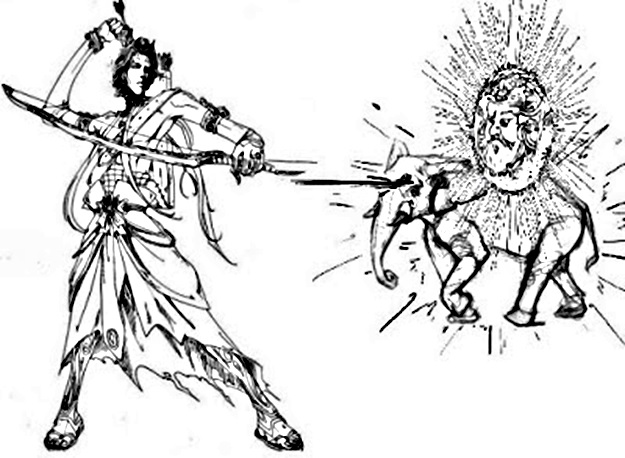
Ayan frees Gandharva from the curse
Absorbing everything what the teachers taught and trained, Ayan grew to shine in lores as if a fresh lamp has been brightly lit. Once a noble envoy from the Kingdom of Vidarbha met Ayan and invited him to the swayamvara to be performed in which several Princes and noble Kings of different states were also the invitees; the swayamvara was to seek the hand of Indumati, sister to King of Vidarbha. Pleased with the invite, Ayan set forth his sight on the swayamvara and commenced journey well guarded on way by ably weaponized royal force. As they reached river Narmada they found the river overflowing. All of a sudden amid waves of Narmada, up raised a mighty Tusker, roaring aloud, waving mighty trunk, marched towards them. Realizing for sure few will meet death if the Tusker is allowed to come near, Ayan fired an arrow and shot at the Tusker, arrow piercing through her forehead. Rain of flowers fell from heaven in flash of moment when the Tusker disappeared and instead there in the bank of Narmada a Prince like looking stranger was seen walking towards Ayan with folded hands. The stranger came near Ayan and after gracefully saluted the King, he said ‘Oh, King, I am Priyamvada, one of the Gandharva (Gandharva is a name used for distinct heavenly beings) and had to take the shape of a Tusker on a curse from Sage Matanga. Appeased by my humble prayer seeking pardon, he redrew the curse to bless me that I will get back my original form when a royal King of Ikshavaku lineage, to be angered by me will release the curse by pulling the bowstring to loosen an arrow to pierce my forehead, and that has since been achieved now’. Priyamvada continued ‘King, I have been patiently waiting here for long years for your arrival to release my curse. Oh, King, I have an imperishable magic weapon called Sammohanam, which when launched will destroy the foes on command and returns back to the sender, undamaged and as fresh as was released. The weapon will silence the foes and reward victory at once. Courteous King, accept this gift of mine, which will be of great use to you at time of need’. Ayan gladly received the magic weapon, acknowledged the gesture of the Gandharva whose curse he freed and proceeded to Vidarbha for the swayamvara. As the news of the arrival of Ayan reached the King of Vidarbha, the royal King welcomed the guest at the city gate itself and took him to the swayamvara hall where a fleet of Princes and noble Kings were seated.
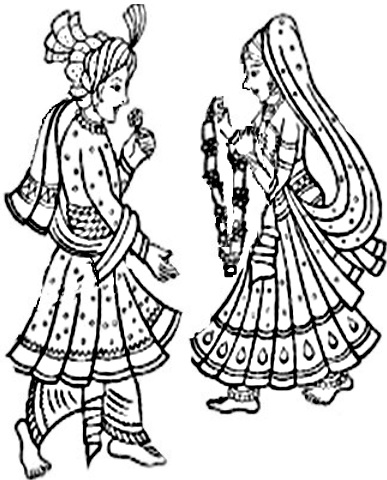
Ayan weds Indumati: Dasaratha born
When the swayamvara began in an ambient air, nobly attired princess Indumati criss crossed each row in the lofty hall to make her maiden’s choice. Lord of beauty for herself, as she walked fast each row, through the veil of cloth which covered her face, she carefully noticed the arts of love expressed by the audience who sought her company in life. On their part, beaming noble chiefs from several states, swarming the hall like cluster of bees in garden, trifled with their gestures to reach the heart of the princess as she passed through them.
The assembled Princesses and Kings as gesture of pomp, displayed their wealth in different ways. While a Prince twirled a lotus, another carelessly pulled out the diamond necklace hanging from his neck and moved its sides on shoulder, another tossed the gold lined robe hither thither. Unmoved by their explicit art and acts of gestures, as princess Indumati went by each suitor King and Prince, the unmindful abigail (accompanying girl) passing along with her fair princess, led her walk past the Kings in order. The accompanying abigail whispered on the princess ears the worthiness and talents of each one of the suitor assemblages as they crossed each one of them.The abigail will point out one person, and say, ‘Indumati, this king is from Magadha. He forgives his enemies, gives shelter to those who seek refuge, and shows same kind of love to all his subjects’. She will point out another and say ‘Indumati, not one of the damsels is not attracted by his beauty. He has abundant grace of Lakshmi and Saraswati’ Before the abigail he would say something, Indumathi will say ‘let us move to the next’. While everyone of the assemblage continued to show their gestures to attract her, exceptional in all, Ayan, noble in beauty, sat silently drowned deep on his own thoughts, unconcerned of other princes, and waited for his turn when princess Indumati reached him. As she reached him, she fully engrossed his attention in the eye-to-eye meeting. Flashing modesty and grace, beaming Ayan was her selection ignoring the accompanying dame’s call of ‘will we pass’. In flash of moment, when princess Indumati laid the wreath on the neck of the mighty dauntless Ayan, there raised loud rejoice from the audience in endorsement of the perfect selection for their union. Clouds of gloom disappeared from the face of King of Vidarbha who rushed towards Ayan and embraced him, took him to seat of throne followed next to eloquently praise to the assemblages the talents and virtues of the prince whom his daughter has selected as her lord and set the stage for knotting Ayan and Indumati. The Pundits who sat ready to perform the rites lost no time in raising fire in the pit hole (a hole made in the ground for sacrificial fire, also called Yagya Kund) for conducting the pre-rituals for the marriage ceremony, and united both Ayan and Indumati with due rites with assemblages as witnesses to the ceremony. Once the marriage ceremonies were accomplished, hallowed by the witness of fire and hailed by all onlookers, the newly wedded couple got ready to proceed to the land of Kosala and Ayan promised to return back again with his relations.
Thereafter joyous prince of Vidarbha bade good bye and travelled with the newly wed princess. The convoy carrying lordly gifts filled halfway path of their home land distance, the newly wed prince returned back to his Kingdom to a thunderous welcome. Meanwhile the disappointed wooers in swayamvara combined together and followed the train of King Ayan who was on way home with his convoy. The vengeance filled combine, menacingly obstructed the marchers midway and in the melee attempted to carry off the bride. However alert Ayan placing Indumati to safety, charged back on the invaders with fierce force. Midway in the ravage battle that ensued, Ayan wasted no time in applying the magical weapon gifted to him by Priyamvada. At once the foes were completely rooted and battle stilled. Happy and triumphant Ayan returned to Ayodhya accompanied by Indumati.
King Raghu’s ears were adequately posted with the entire episodes through his agents, and even before Ayan reached home, the rejoiced King hailed his son’s glory by welcoming the newly wed couple in pomp and style. In the next few days, he transferred the yoke of Kingship to his worthy son and tread himself into the jungle for the quite way of parting the earth. Newly anointed King Ayan fared no less in kingship compared to his father as both were supreme in their own manner. His folks felt not orphaned. The foes whenever raised their heads were silenced. As the years passed and Ayan entered life’s last stage, he took the counsel of hermits for the joys of supreme by quelling his senses and weaning away the thoughts from earthly pleasures of life to reach the world of bliss. Though for namesake he remained the ruler of the Kingdom, the counsel appointed by him ran the show on his behalf. In the meanwhile, detached from earthly bond, his father Raghu too released his soul to join the land of bliss. When the news of his father’s demise reached Ayan, he broke down and grieved, however on plea of his counsel, soon he absorbed back his grief and returned to rule the Kingdom by himself for the sake of welfare of his folks. In the next few years Ayan was blessed with a son, as bright as Sunshine and famous through entire corners of the world. The son was affectionately named Dasaratha.
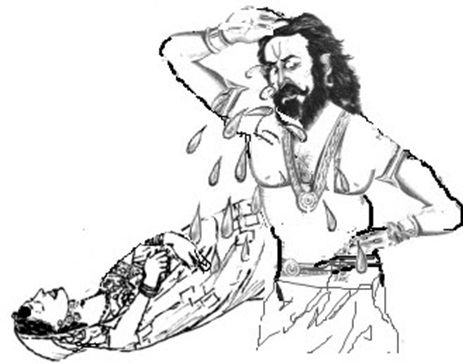
Ayan’s death – Dasaratha takes over Kingdom
Ayan’s rule was upright, rival kings crushed but not when those who remained mute against the King. Nature gave the glorious hero unclouded happiness and many gems, one being Indumati. There is a saying, sorrow follows joy and true to it, one day after the loving pair happily plucked flowers and leaves and wandered through their pleasant garden, they briefly rested under a tree for a while. Suddenly there fell from the sky a heavenly wreath of flower, from the harp (instrument) of the divine saint Narada on to Indumati’s breast. Elated short lived at the touch of the wreath, Indumati’s face paled and in moments fell down lifeless thereafter. Scared at the sight of Indumati’s demise, Ayan too swooned. Shocked followers screamed and cried, no less the swans and parrots too in pond and air. Soon, mourned King raised up to lay her in his lap and wailed uncontrollably.
He was wailing ‘Indumati, what fate is this to kill your tender life by touch of a flower, oh, my beloved, is this the kind of reward not for the sin, but for the love you and me spread amongst our folks ? How could you whom I loved the most, leave me forlorn pushing to maimed life, why me alone should bear the grief? How will your slender body bear the roughness of pyre? Fair spouse, wake up, wake up and melt down my gloom’. As the King wailed uncontrollably, his loyal folks consoled him, removed the queen from his lap and helped him carry out due rites meant for demised, and the rites with the help of his folks he performed in all honesty. Ten days grief that followed the rites when melted, there came few counsels (disciples) of Sage Vashishta to bare all facts on Indumati to the King. They spoke ‘oh, pious King, saint Vashishta sent us to brace your heart and to reveal the facts of this grief. Demised Indumati, nymph celestial in heaven in previous birth, known then as Aruna committed a sin. At the behest of Lord Indira, she disturbed the arduous penance of sage Trinabindu, whose penance if succeeded would have unfamed Indira, so imagined Lord Indira and therefore sent her to disturb the penance. Penance disturbed, sage Trinabindu cursed her. When trembled Aruna bowed before the saint to admit her folly and revealed that the act of sin committed by her was forced upon her by none other than Lord Indira, the saint in wrath, Trinabindu, cooled down to soften the curse but said since it has come out of his mouth, it can not be swallowed back and so the nymph will have to face the boon to get birth on earth, win a bride thence to lead a happy life for an undisclosed period of time. She will however be rid of the curse and regain her original status as nymph and return to heaven again when heavenly flowers from the harp of divine saint Narada fall on her breast’.
The wise counsels from Sage Vashishta continued before departing ‘mourn no longer King, and quit your grief since the bondage of the nymph with earthly soul has ended due to destiny. Your spouse on earth in the form of Indumati has departed to regain her status. No matter how much you may wail and cry, the soul that has cast off the coils of senses will not return back. O king, death is certain for those who are born; even if you also want to die and accompany, it is not possible as the travel path of each of the souls are independent and different. The wise will forget the dead , but only fools will keep mourning for the dead. Whatever happens is karmic reactions; therefore, calm down, manage the kingdom well, and perform your duty without shirking. That will be the act that will give meaning to this life in which you were born,’ they said, and left. Therefore, oh, King, let peace and sense prevail on you to continue service to your folks in all fairness, worth your birth’. Thus, command of their master carried out, the counsels departed. But the words of peace from the counsels to Ayan, relieved not the sorrow pierced deep inside agonized heart. After the birth of Dasaratha, in the next eight years, only dreams could relieve grief struck Ayan. However, Ayan unable to shed the grief in mind on account of Indumati’s demise, patiently waited till warrior son Dasaratha was crowned as his successor after he was well taught in all parts of Kingship. Once renounced the earthly pleasures of Kingdom, Ayan renounced food and drink too and on a fine day he went near river Sarayu and shed his body in the river.
…………..Continued 2

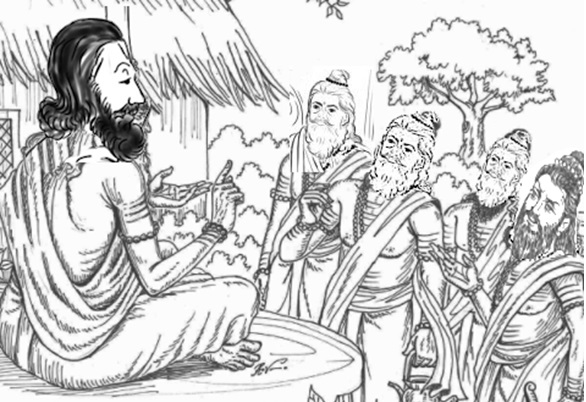
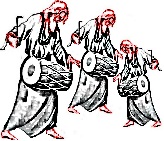
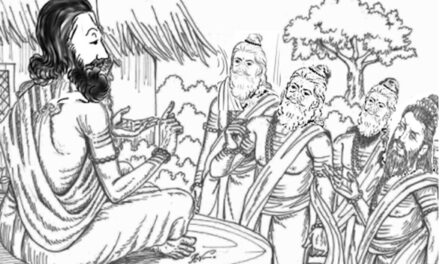
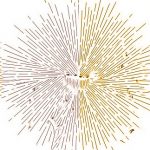
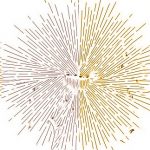
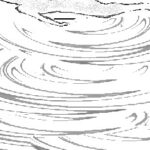
Very interesting to read and know of the Raghuvamsa lineage. Sage Vasistha is also mentioned in the Ramayana as King Dasaratha’s family guru and the teacher of all the princes, including Rama. But he was also the guru of King Dilipa, who was one of Rama’s ancestors. The implication is that sages that very long lifespans.